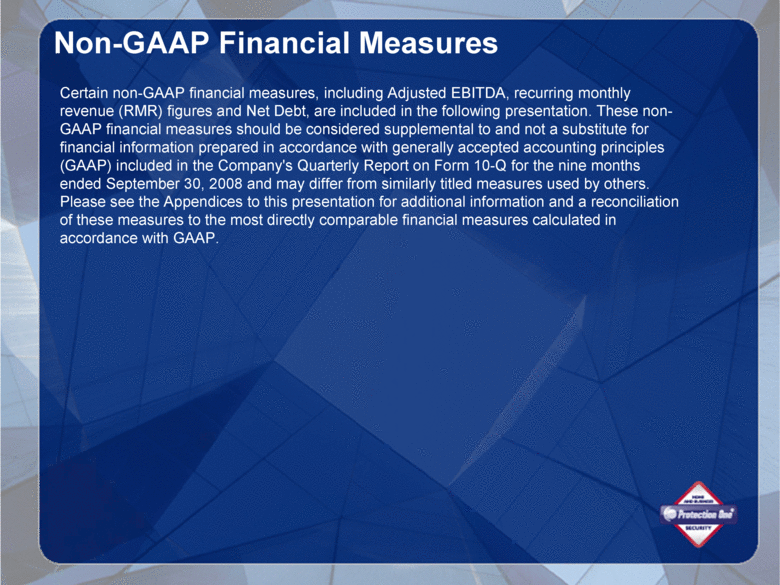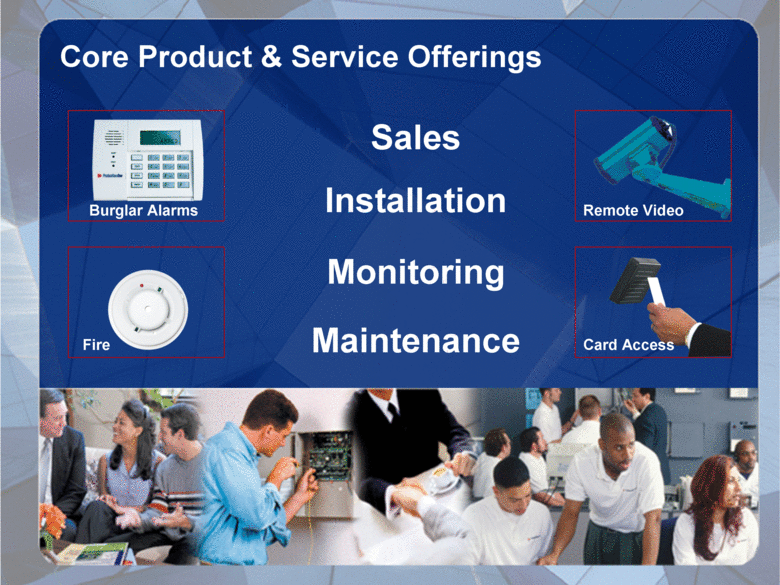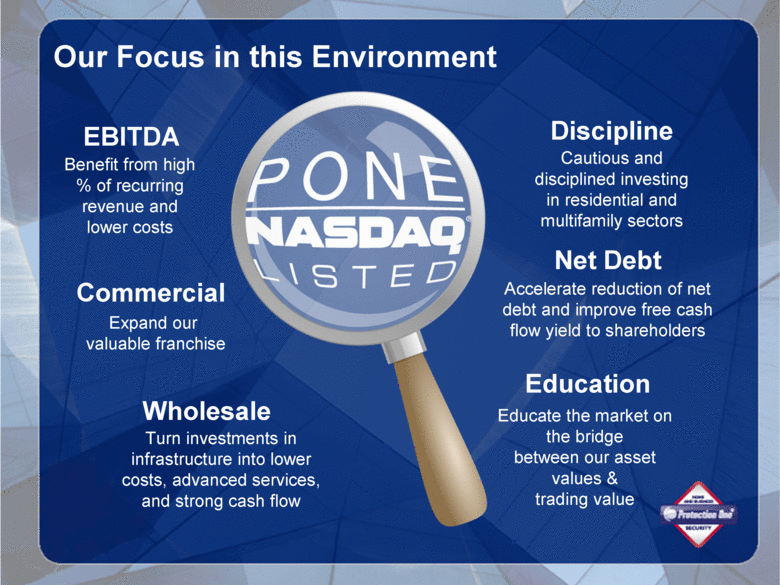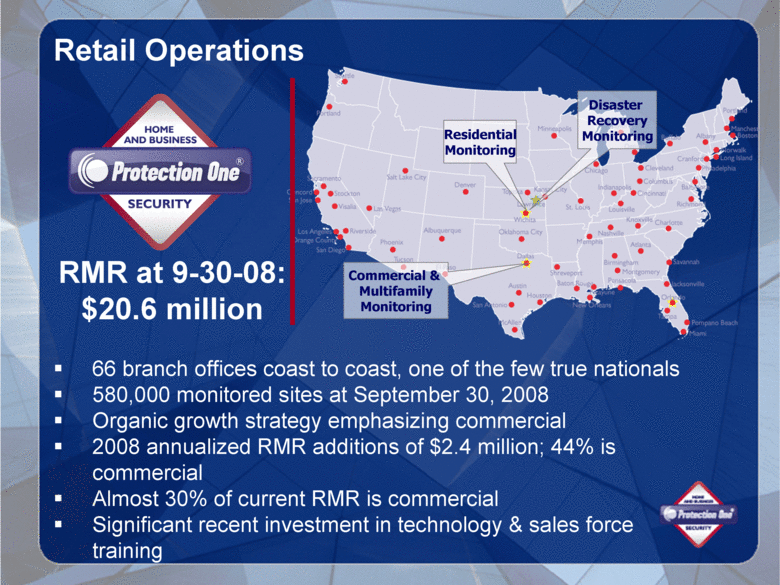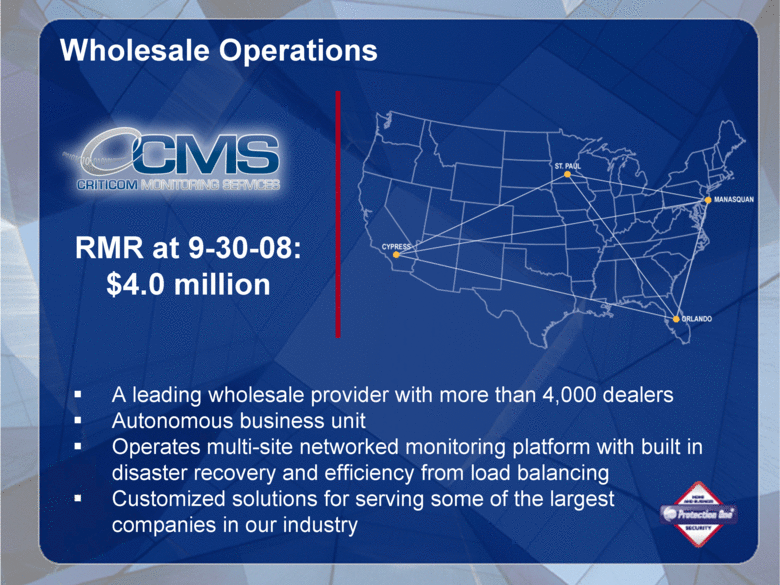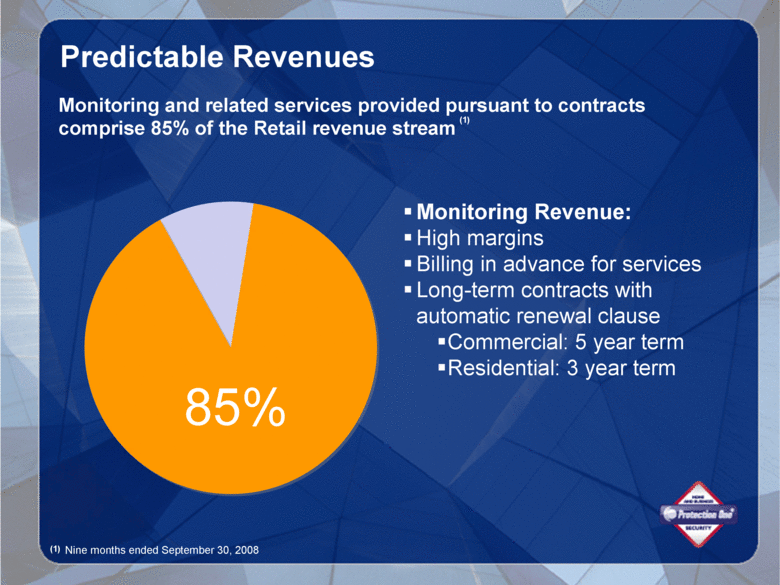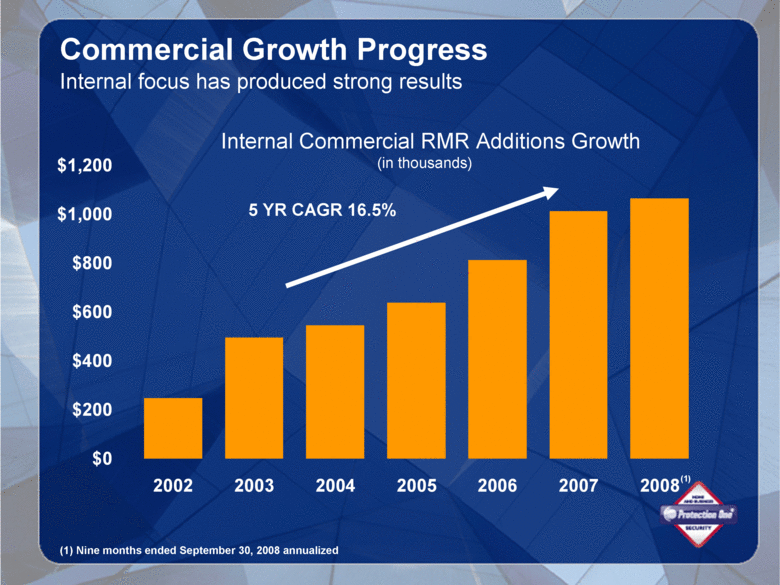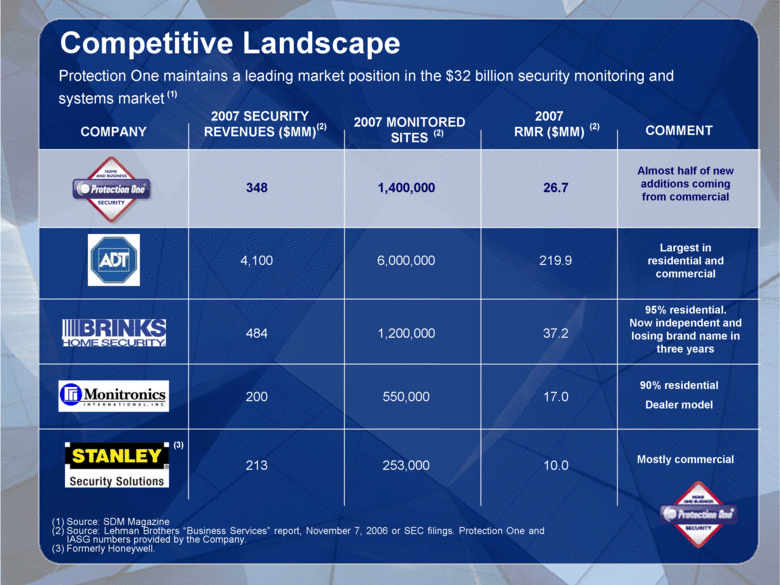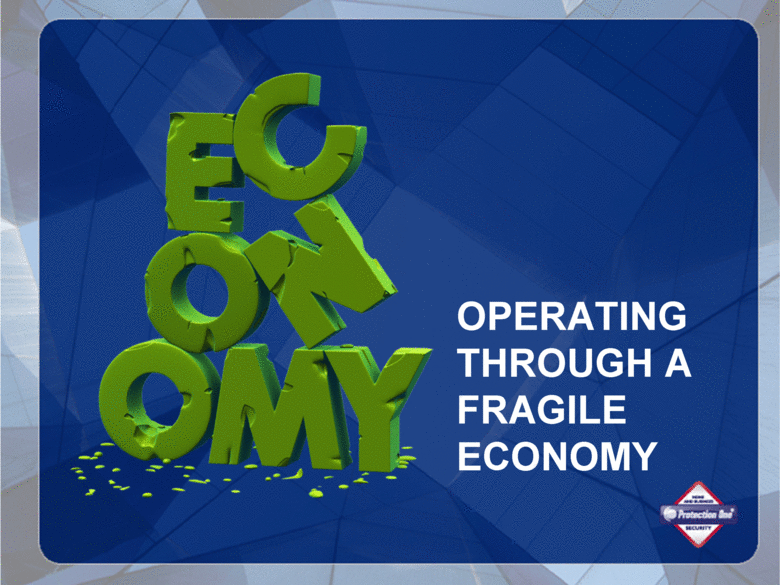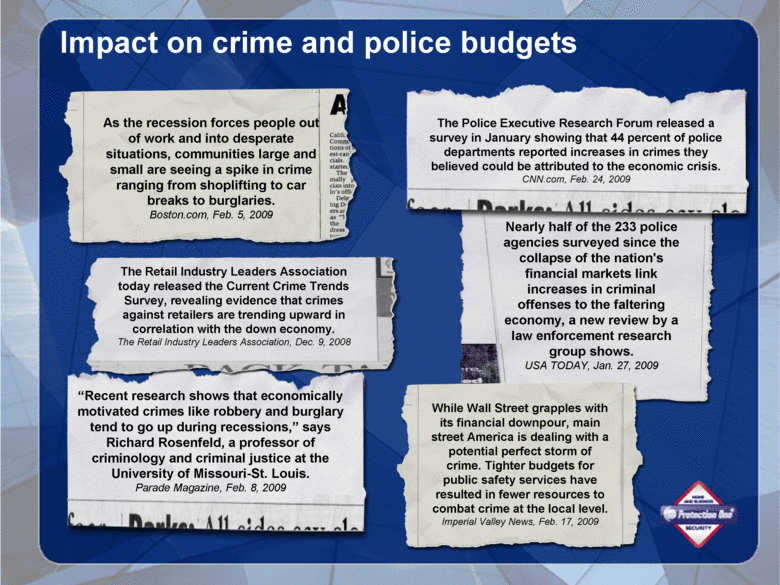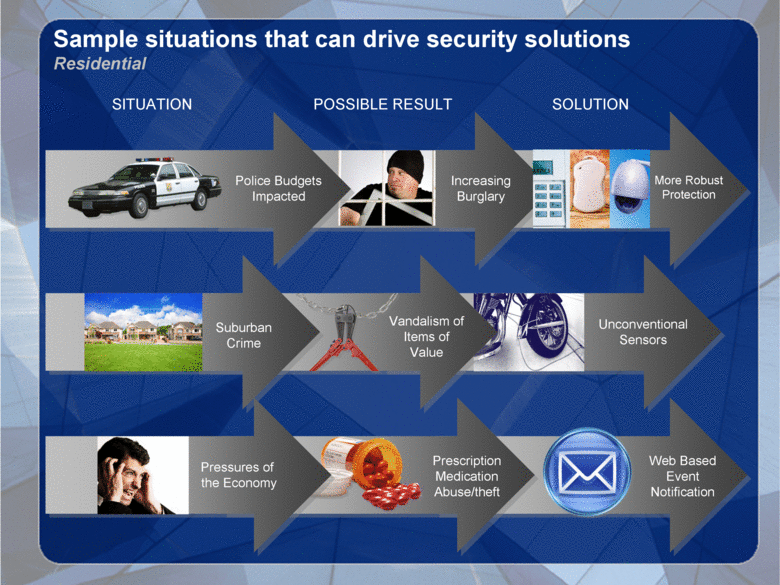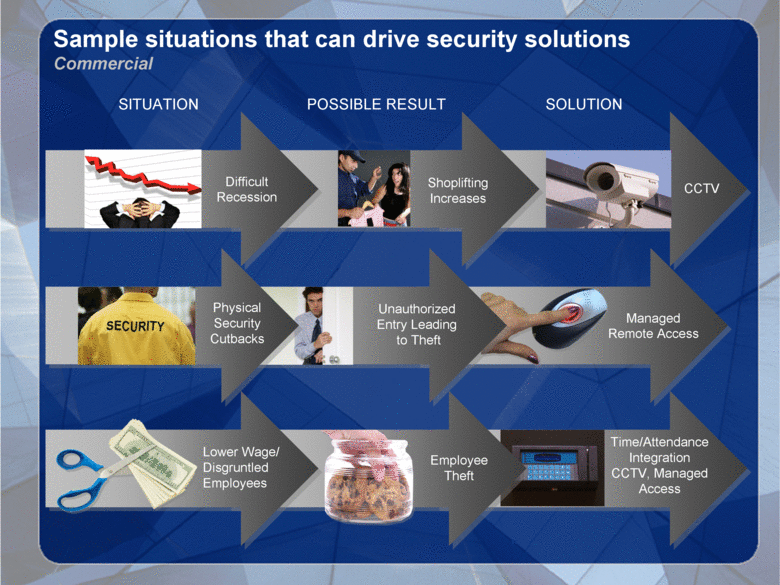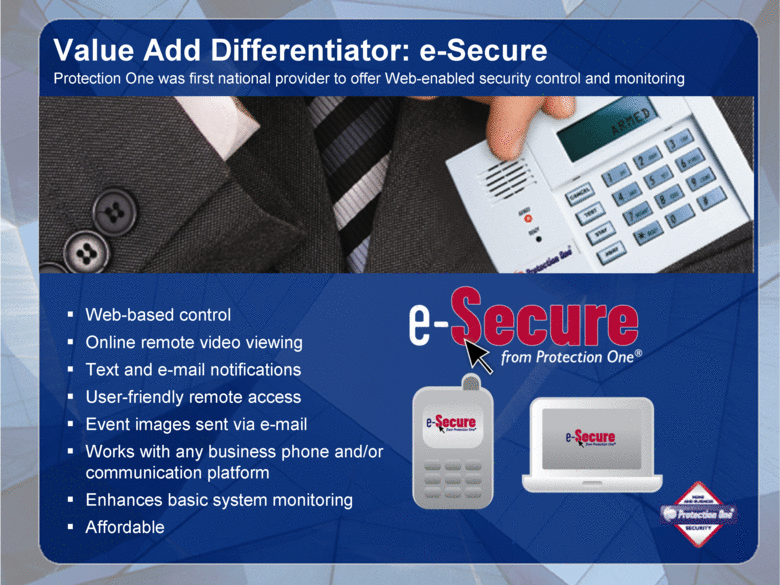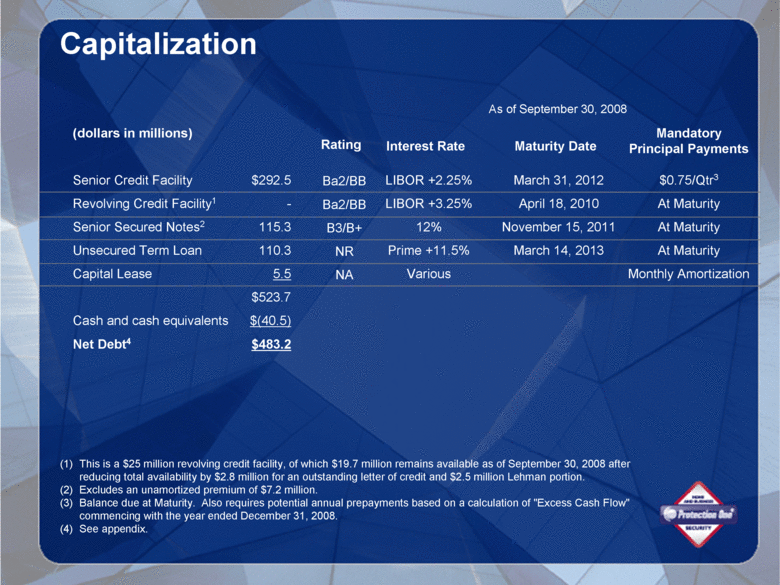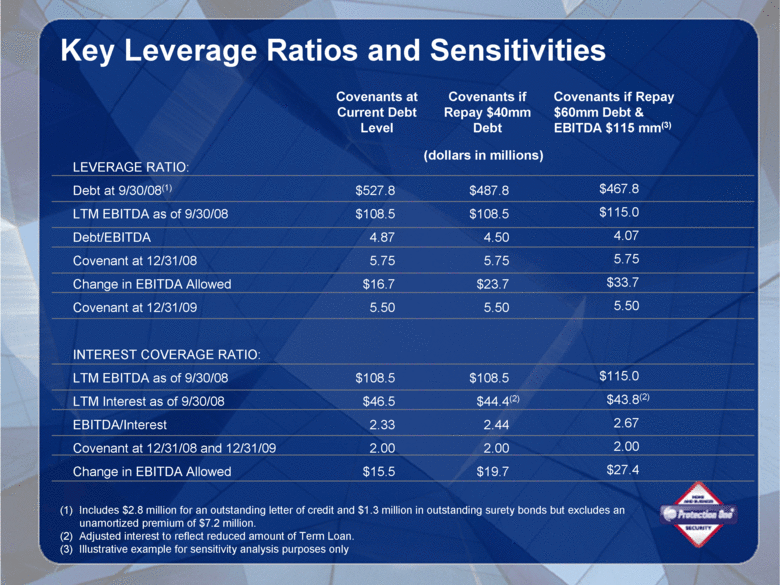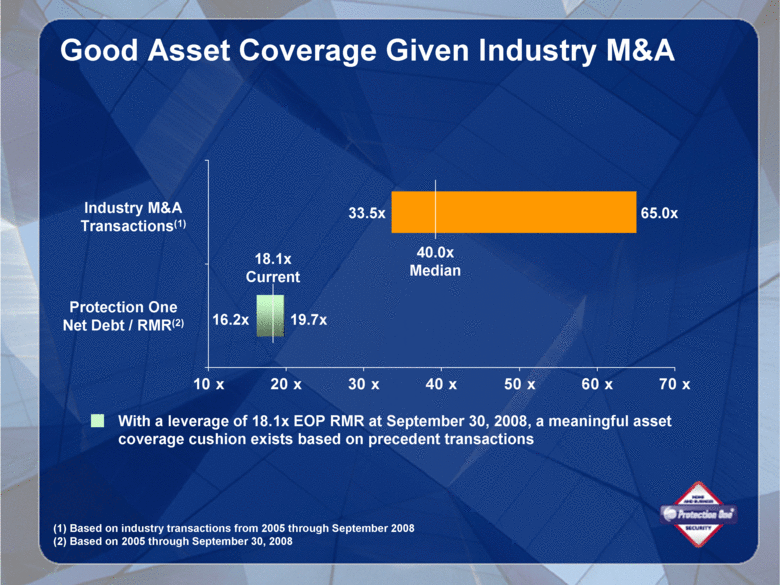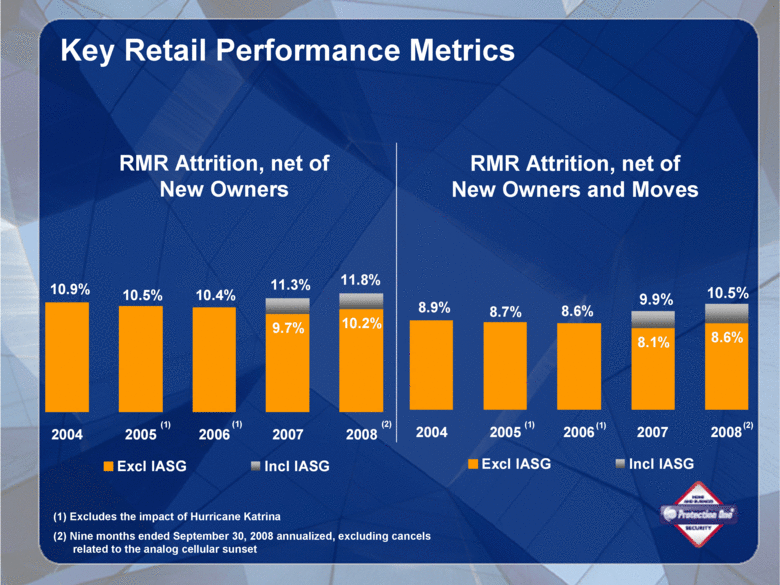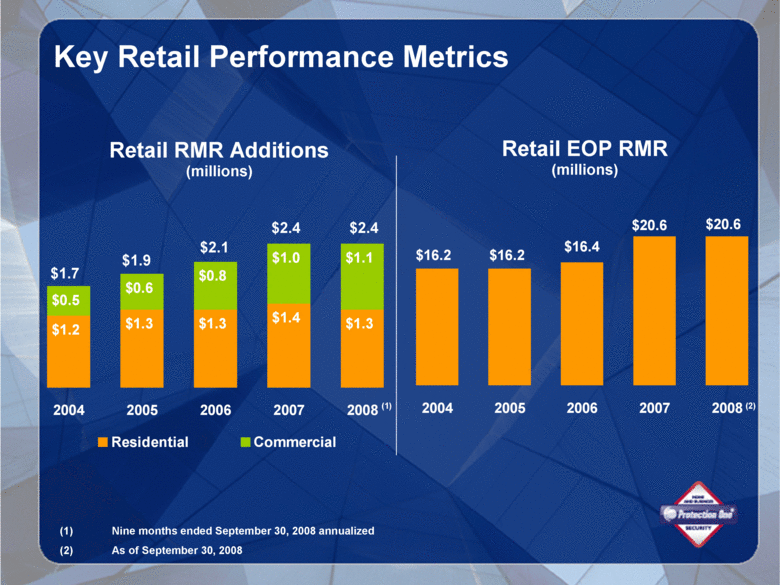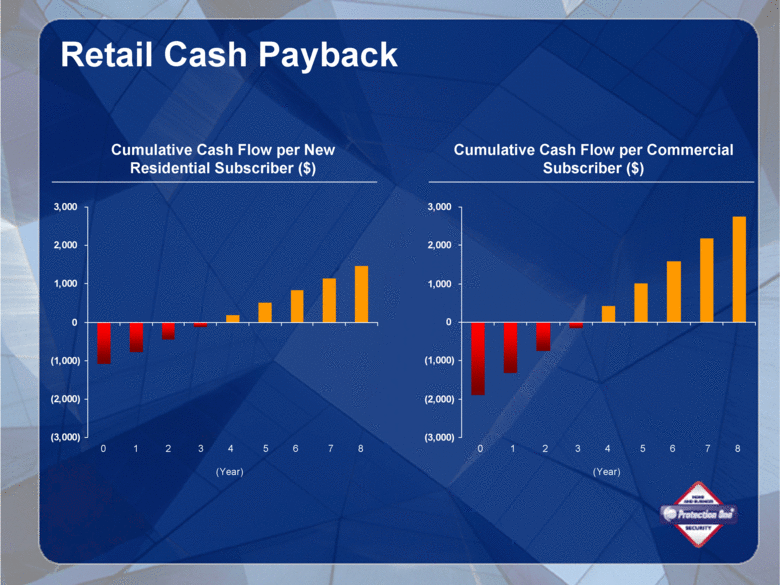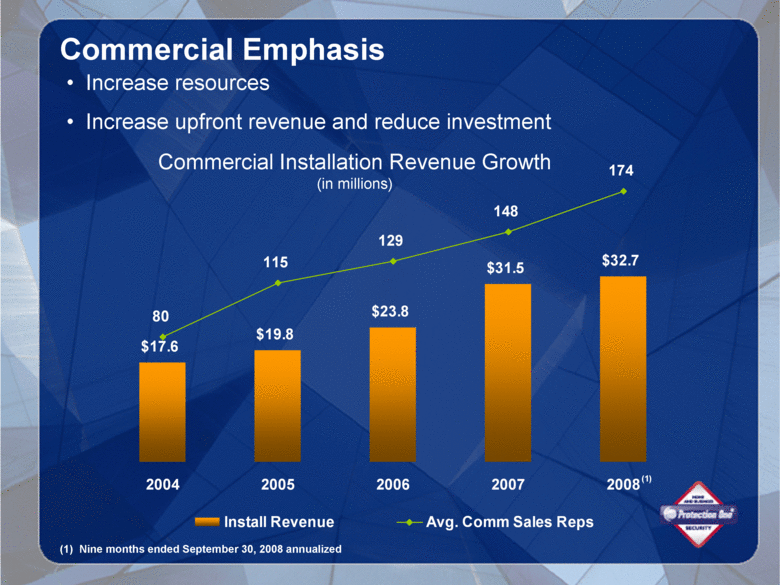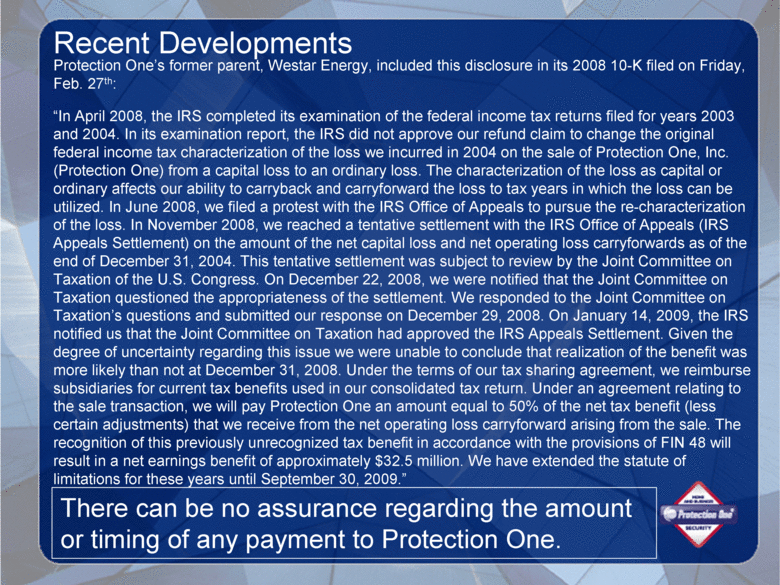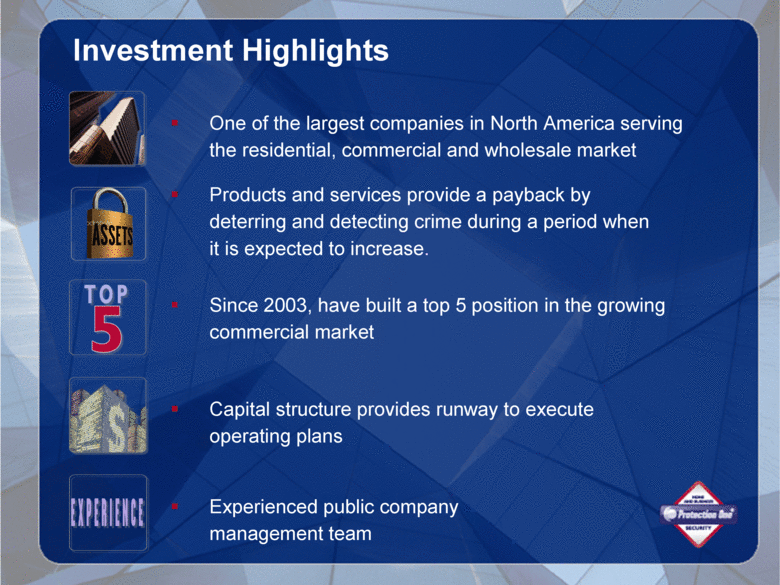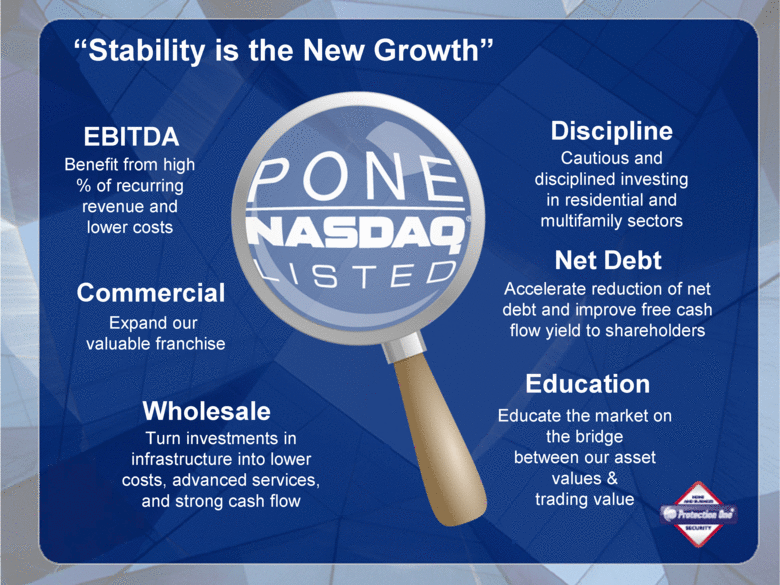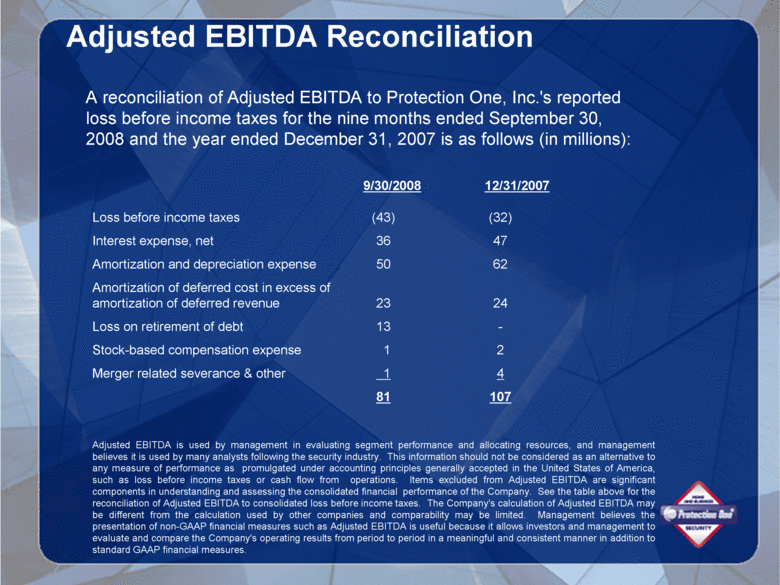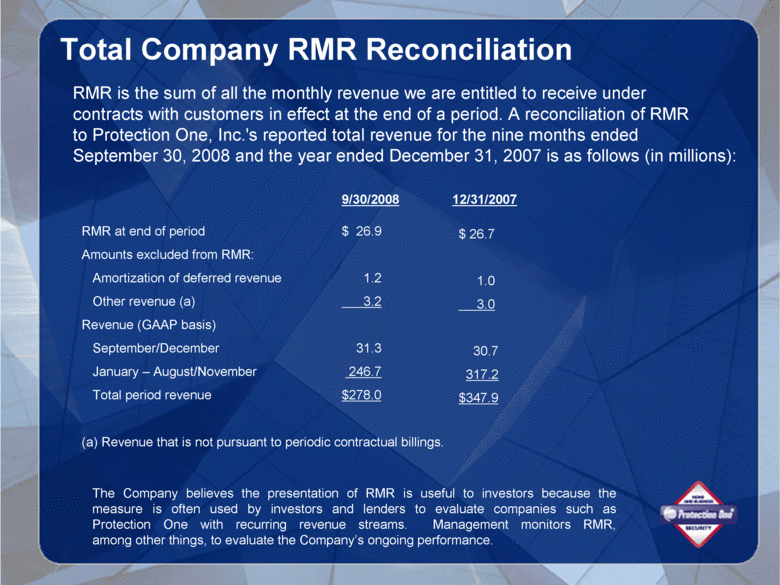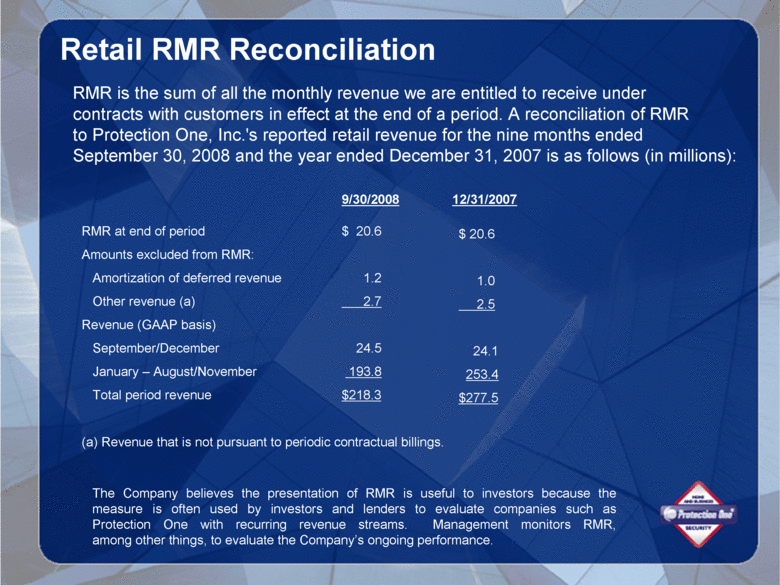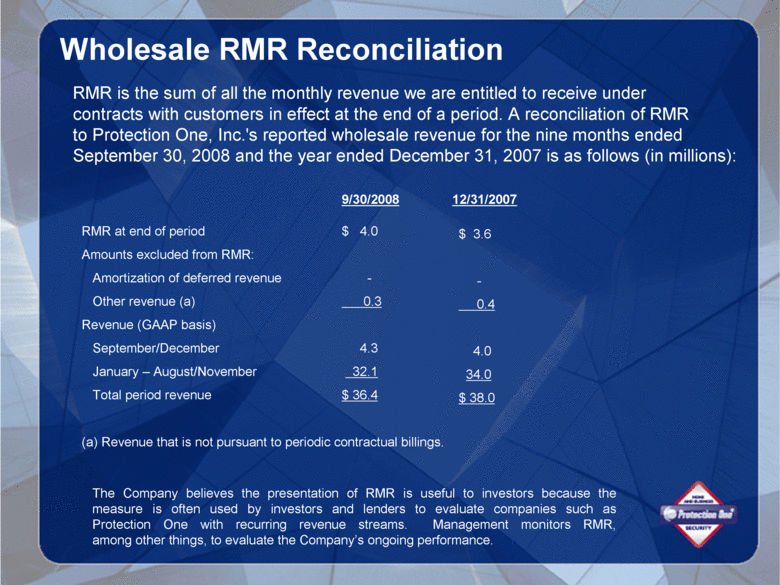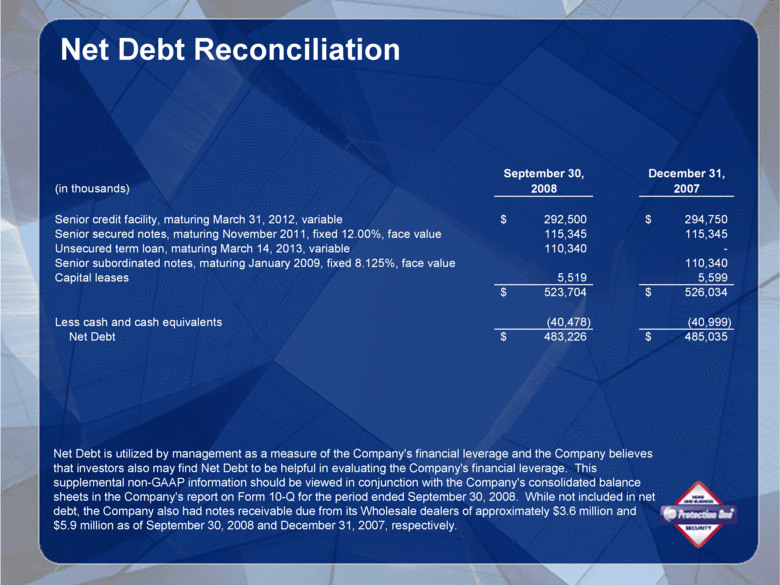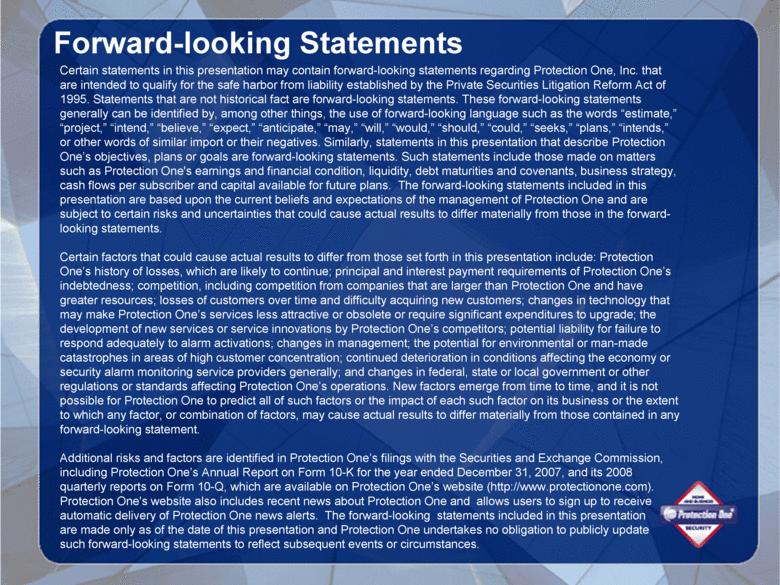
| Forward-looking Statements Certain statements in this presentation may contain forw ard-looking statements regarding Protection One, Inc. that are intended to qualify for the safe harbor from liability established by the Private Securities Litigation Reform Act of 1995. Statements that are not historical fact are forward-looking statements. These forw ard-looking statements generally can be identified by, among other things, the use of forw ard-looking language such as the w ords “estimate,” “project,” “intend,” “believe,” “expect,” “anticipate,” “may,” “w ill,” “would,” “should,” “could,” “seeks,” “plans,” “intends,” or other w ords of similar import or their negatives. Similarly, statements in this presentation that describe Protection One’s objectives, plans or goals are forward-looking statements. Such statements include those made on matters such as Protection One's earnings and financial condition, liquidity, debt maturities and covenants, business strategy, cash flows per subscriber and capital available for future plans. The forward-looking statements included in this presentation are based upon the current beliefs and expectations of the management of Protection One and are subject to certain risks and uncertainties that could cause actual results to differ materially from those in the forw ardlooking statements. Certain factors that could cause actual results to differ from those set forth in this presentation include: Protection One’s history of losses, which are likely to continue; principal and interest payment requirements of Protection One’s indebtedness; competition, including competition from companies that are larger than Protection One and have greater resources; losses of customers over time and difficulty acquiring new customers; changes in technology that may make Protection One’s services less attractive or obsolete or require significant expenditures to upgrade; the development of new services or service innovations by Protection One’s competitors; potential liability for failure to respond adequately to alarm activations; changes in management; the potential for environmental or man-made catastrophes in areas of high customer concentration; continued deterioration in conditions affecting the economy or security alarm monitor ing service providers generally; and changes in federal, state or local government or other regulations or standards affecting Protection One’s operations. New factors emerge from time to time, and it is not possible for Protection One to predict all of such factors or the impact of each such factor on its business or the extent to w hich any factor, or combination of factors, may cause actual results to differ materially from those contained in any forward-looking statement. Additional risks and factors are identified in Protection One’s filings w ith the Securities and Exchange Commission, including Protection One’s Annual Report on Form 10-K for the year ended December 31, 2007, and its 2008 quarterly reports on Form 10-Q, w hich are available on Protection One’s w ebsite (http://www.protectionone.com). Protection One's w ebsite also includes recent news about Protection One and allows users to sign up to receive automatic delivery of Protection One new s alerts. The forw ard-looking statements included in this presentation are made only as of the date of this presentation and Protection One undertakes no obligation to publicly update such forward-looking statements to reflect subsequent events or circumstances. |


